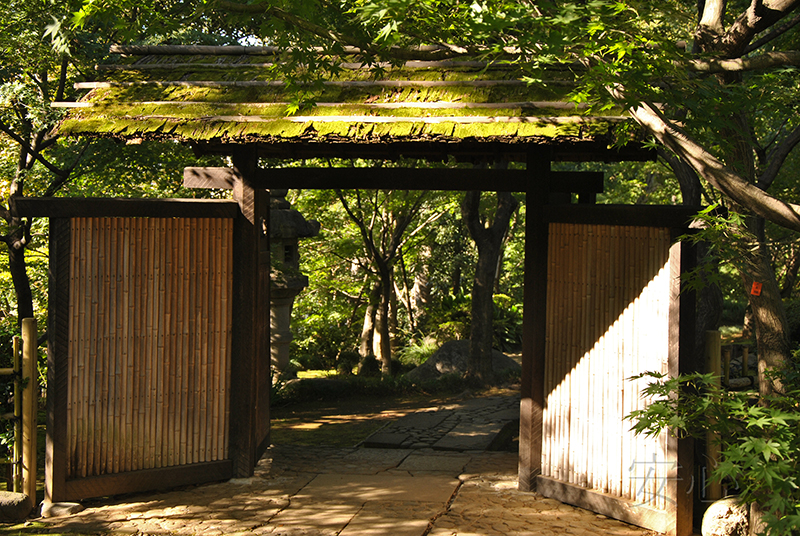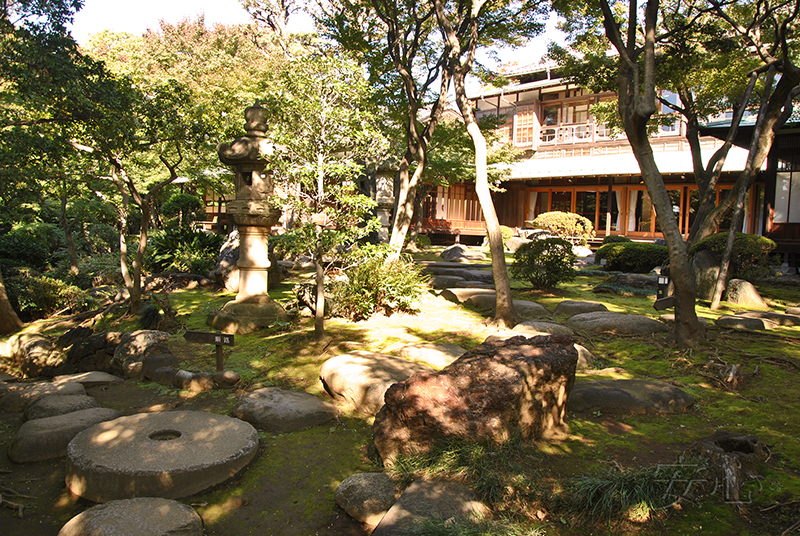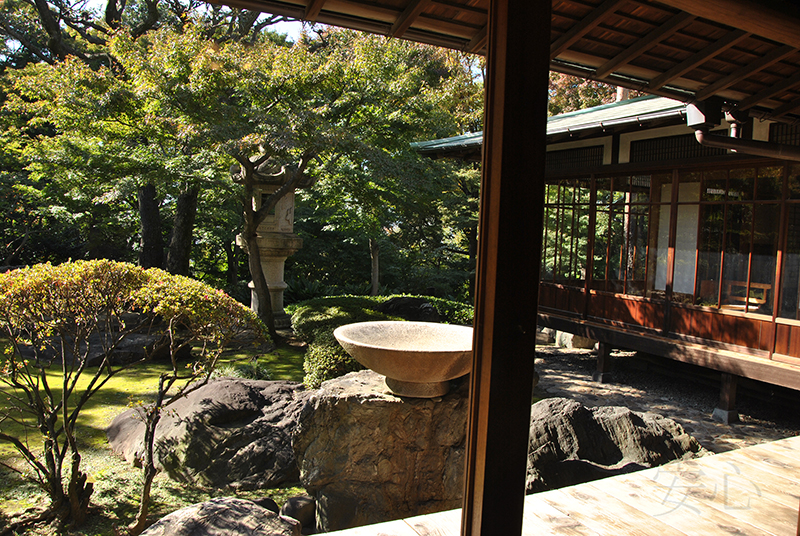
Kyu Asakura House gardens
Torajiro Asakura was a famous politician, councilor of Shibuya Town Assembly. His career developed very successfully, and he reached the post of councilor of the Tokyo Metropolitan Assembly, until at the age of sixty-two years old he retired from work.
In 1919, family head Torajiro Asakura built the Kyu Asakura House in its present location as the seat of the Asakura family. The land was acquired by the ancestors of the Asakura family in the 1700’s during the Edo period. At first the site it was used for farming. Then, at the end of the Edo period, the head of the family, Kinzo Taki, took up rice milling here. And only after the construction of the house, at the beginning of the 20th century, a garden was created.
In 1947, three years after the death of Torajiro, the estate was sold to pay inheritance tax.
Now the residence belongs to the state. In 2004 the house was designated as an Important Cultural Property by the government. The house survived the Great Kanto earthquake and the Second World War. And now it is is open to the public as a museum.
The easiest way to get to Asakura Residence is by metro. From Naka-Meguro Station you should walk for 5-10 minutes. We arrived taround 10 a.m., and there were almost no people at that time. The entrance fee is symbolic, only 100 yen.
On one of the tablets it was said that the garden is divided into three parts: the front garden, the main garden and the kitchen garden. However, we did not find any kitchen garden. The first thing we saw was the mansion. To the right of the entrance is a large stone lantern with carved deer.
On the left, a wide road leads to a covered gate. The roof covered with moss looks especially beautiful.
From here begins the main garden. We went along the stone path. If it weren’t such a sunny day, it would probably be rather dark here. But this November day we were lucky: warm rays scattered light on the surface of the moss, giving the garden a special charm.
The road led us to a main building (shuoku), a two-stored, large structure. On the south side of the ground floor are a 10-mat room holding a Buddhist or family altar (butsuma), a 12-mat living room, and a 10-mat bedroom (now all converted into a single meeting room). Upstairs on the second floor are a hall consisting of a joined 15-mat and 12-and-a half-mat room. The second floor is thought to be used for meetings when Torajiro Asakura was performing his public duties.
Right in front of the house is a small open space. Near the engawa a flat bowl is set on the large stones. You can only imagine how fantastic it looks in the rainy season!
The family lived on the ground floor of the main building. At the end of the corridor on the west side are three rooms characterized by Japanese cedar panels. One of these, a sukiya-zukuri style room (tea house architecture that attaches importance to harmonization with nature) with feature cedar wood grain timber was used by the master of the house for receiving personal guests who would often arrive with petitions.
A drawing room (osetsuma) in the eastern part was used for formally receiving visitors at important annual festivals and other events.
Having examined the house outside, we went on. Only the territory adjacent to the building is flat, but the main garden is located on a hillside.
If it weren’t for the lanterns, paths and signs, one would think that this is an untouched part of nature. And it is in the center of Tokyo, it's hard to believe! Particularly impressive are the lanterns. There are many of them, beautiful, large, as if growing out of the ground.
In the end, we reached a fence with a door. The text on the plate is written in Japanese, and only one phrase in English is “Exit only”. However, the door was closed. Looking over the fence, we saw just a covered bench.
We went back and returned to the place where we started the walk. We decided to enter the house.
Almost all the rooms were Japanese-style. However, a single Western-style room was created next to the entrance so that guests could enjoy a Western-style reception. Many stately homes featured only one Western-style room which was used to receive visitors in business or household matters, or reserved for the butler’s duties.
Japanese-style rooms
Western-style room
There is also a conference room. On the screen constantly broadcast photos of the garden at different times of the year.
But, of course, for us it was very interesting the view from different windows. They say that earlier, from the second floor you could see Mount Fuji. But now it is not visible because of the grown trees.
The Kyu Asakura House gardens are valuable examples of gardens designed for modern Japanese-style homes of the Taisho era, and retain many of the features associated with such gardens. Don't miss the opportunity to visit it. And, of course, the views from the house are just wonderful! Seen from the main building, the gardens resemble a framed charming picture.
Garden Information:
Address: Sarugakucho 29-20, Shibuya City, Tokyo 150-0033, JAPAN
Opening hours: from 10 a.m. to 4.30 p.m. (last entry 4pm)
Closed: Monday, but open if Monday falls on a national holiday, in which case closed the next day, Tuesday. Closed December 29 - January 3.
anshin©2011All rights reserved. When using the materials of the site, reference is obligatory.
Proposals for co-operation, as well as comments and suggestions on the site please send to the address: anshinsad@gmail.comtel: +7 (965) 121-80-60, 10am-20pm































